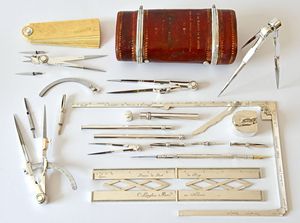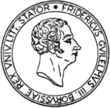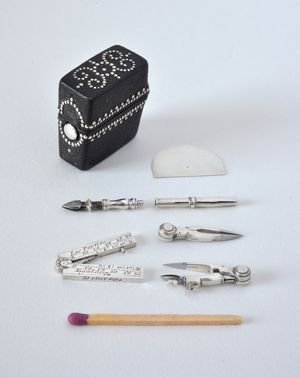The exhibition ‘Sectors and Rare Mathematical and Drawing Instruments of the 17th and 18th Centuries Part II’ at the Arithmeum follows the very successful first part of the exhibition.
This first part can currently be seen at the Museo Galileo in Florence until 15 September 2024 under the title ‘Circinus’. It has been expanded to include some early Italian predecessors of the sector. A reconstruction of the proportional compass designed by Leonardo da Vinci is also on display there.
As an analogue calculating instrument in combination with mathematical sets and drawing utensils, the sector was a practical companion for architects, engineers and scientists for over two centuries. Famous mathematicians such as Jost Bürgi and Galileo Galilei were involved in its development and perfection.

Drawing set by Claude Langlois and Charles Clément, silver, Paris ca. 1726. It was used by the architect Ange J. Gabriel (Petit Trianon for Madame de Pompadour at Versailles, Place de la Concorde). Collection Rocca.
The second part of the exhibition presents particularly valuable sectors and mathematical sets, which demonstrate the beauty of scientific instruments, as well as the practical tools that were necessary for their use. The utmost care was also taken in the manufacture of these drawing and writing instruments. They also impress with their exquisite aesthetics.
In addition to protractors, folding angles, rulers with different scales, forerunners of today's mechanical pencils, penholders and inkwells, there are also silver seals that were part of mathematical sets. Rare plaques with hallmarks for the tax assessment of these precious silver instruments, which today enable the chronological classification of these objects, allow an additional historical understanding of these extraordinary objects.
The smallest set known in silver by Jean Baptiste Delure, ca. 1698, Paris. A masterpiece with a sector measuring only one French inch (2.7 cm)! Collection Rocca.
Sectors are a vivid example of how mathematical application can not only be useful, but also very beautiful.
You can find an introductory video to the exhibition here:
A German, French and Italian version of the video is also available.







